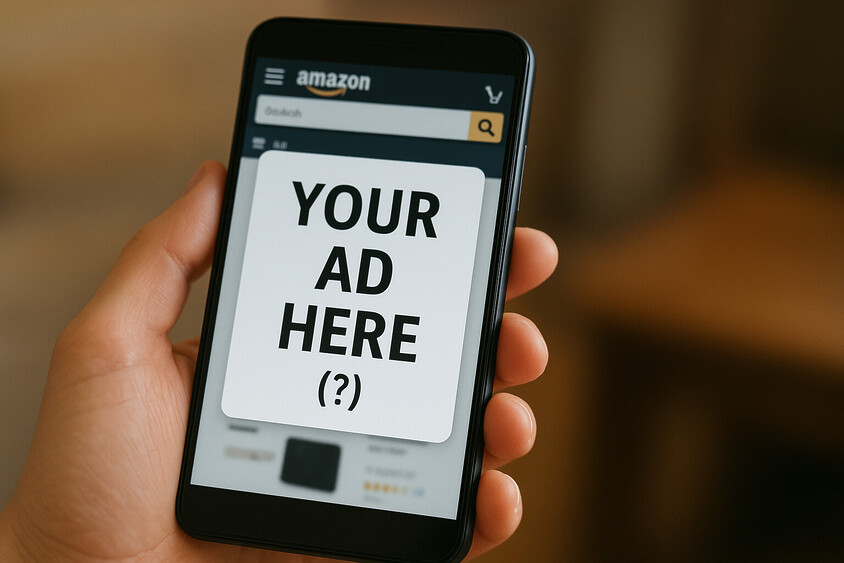Amazon Sponsored Products – Is the Investment Worth it for You?

Getting your products seen on Amazon is immensely important as the number of potential shoppers (and sellers) increases and will continue to do so over the next few years. This is why the importance of Amazon Sponsored Products cannot be denied. But here’s the big question: Is it actually worth spending money on them? That’s what we’re going to break down today.
TL;DR – Key Takeaways
What Are Amazon Sponsored Products?
Sponsored Products on Amazon are products pushed by ads that promote them as individual product listings. You pay only when someone clicks on your ad – this is called cost-per-click, or CPC. These ads show up in search results, on product pages, and on both desktop and mobile. It’s a highly effective way to put your products right where potential shoppers are looking.
These ads aren’t just for big sellers or vendors. If you’re a professional seller, or even an author, you can use them. The goal is simple: more eyes on your product, more clicks, and hopefully more sales.
How Does it Work?
Here’s the basic idea:
The process is as follows: When someone clicks your ad, they land on your product page. If your product looks good and the price is right, they might buy it. The better your ad and product match what shoppers want, the more likely it is that your investment pays off.
Who Benefits Most from Sponsored Products?
Not every seller will get the same results, so let’s break it down:
So, the general answer to our question — whether Sponsored Products on Amazon are worth it for you — is quite simple: Yes. No matter what level you’re selling at, Sponsored Products always offer some kind of benefit. The real question is whether there’s a sweet spot — a budget that promises the highest ROI, depending on your seller level. Let’s find that out.
One thing’s for sure, though: you usually want to have enough sales history and product reviews before investing heavily. Otherwise, ads can end up costing more than they earn.
Evaluating Your Investment
Before diving deeper into Sponsored Products, let’s first take a closer look at how to measure whether your campaigns are actually paying off.
How to Calculate Expected ROI:
For a reliable estimate regarding your return on investment (ROI), compare your ad-attributed revenue with your total ad spend. The key metric here is called ACoS (Advertising Cost of Sales), calculated as:
ACoS = (Ad Spend ÷ Ad Revenue) × 100
If your ACoS is lower, this means that you’re running a profitable campaign. However, profitability also depends on your product’s profit margin — for instance, if your margin is 25%, your ACoS should ideally stay below that if you want to keep your ROI positive.
How Advertising Can Reduce Your Profitability:
While Sponsored Products on Amazon can boost visibility, excessive spending or poor targeting will diminish your profits very quickly. This happens when your ACoS is higher than your profit margin or when ads drive clicks but not conversions. So, always monitor campaigns closely and adjust your bids, keywords, or targeting if your cost per sale starts to outweigh your profits.
Which Metrics to Watch Closely:
Tracking these metrics together gives you a realistic view of how well your Sponsored Products are performing — not just in traffic, but in profit.
Setting Up a Sponsored Products Campaign
Starting out with Sponsored Products on Amazon is easy like Sunday morning — optimizing them for steady growth is what requires a reliable strategy. Here’s how you can set up your first (or next) campaign for success:
Step-by-Step Setup:
Recommendations by Seller Type:

Targeting Strategies
Your targeting approach is what determines how effectively your ads reach the right shoppers.
Automatic Targeting:
Amazon’s algorithm automatically matches your Sponsored Product with relevant search terms and products. This is ideal if you are just starting out or you’re running broad campaigns designed to discover new keywords. Automatic campaigns are the optimal place to start if you don’t have any historical data yet or if you’re looking to identify profitable search patterns first.
Manual Targeting:
When you run manual campaigns, you are the one who chooses specific keywords or products to target. The benefit here is full control and is best for experienced sellers who can analyze data and fine-tune bids based on performance.
Tips for Matching Strategy to Seller Level and Goals:
The “Sweet Spot” – Budgeting, Bidding, and Performance Optimization
Amazon Sponsored Products is all about your budgeting and bidding strategy, as it is tied directly to how your campaign performs. Whether you’re a new or experienced seller, how you invest your funds and adjust bids will influence both your visibility and profitability on Amazon. Here are the optimal amounts depending on at what stage your business is.
Suggested Budgets by Seller Size
Common Mistakes You Can Avoid Easily
There will always be mistakes in your Amazon Sponsored Products strategy that are unavoidable. Others however, are common and easy to circumvent if you know how. Let’s take a closer look:
Stay proactive, stay number-focused. That way, you can keep your Amazon Sponsored Products campaigns on point and profitable.

Conclusion
Amazon Sponsored Products are highly effective for your marketing strategy, when applied smartly.
For small sellers, they’re a great way to gain more visibility and gather valuable performance data.
For mid-sized sellers, they offer momentum and scalability.
If you are a large seller, Sponsored Product ads on Amazon are an essential pillar for remaining dominant on the platform and defending market share.
The secret lies in aligning your Sponsored Products on Amazon with your business stage and goals.
Start small, focus on learning and optimization, and scale intelligently as you gather reliable data.
When managed carefully, Amazon PPC campaigns don’t just generate clicks, they build sustainable growth, strengthen your brand presence, and secure your position in the Amazon marketplace.
FAQs
Amazon Sponsored Products are pay-per-click ads that promote individual product listings. They appear in search results and on product detail pages, helping increase visibility and sales. Sellers choose which products to advertise, set budgets and bids, and pay only when shoppers click on their ads.
There’s no fixed cost for Sponsored Products. You set your own daily budget and bid per click. Costs vary by competition, keywords, and category. Typically, sellers pay between $0.20–$3.00 per click, depending on market demand and product type, making it flexible for all business sizes.
Yes – if you want to boost product visibility, drive traffic, and improve sales rank. Sponsored Products are especially effective for new listings or competitive niches. However, sellers should monitor ACoS (Advertising Cost of Sales) to ensure campaigns remain profitable and align with overall sales goals.






